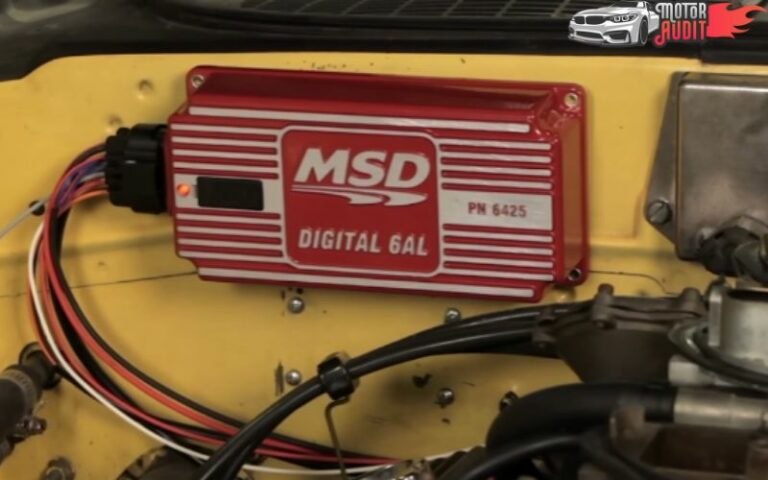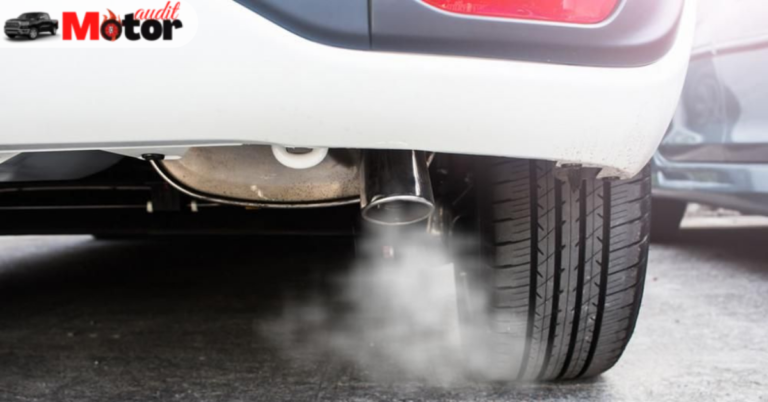4 Signs and Symptoms of Bad MDS Solenoid (How to Fix It?)
The Chrysler/FCA third-generation Hemi has the cylinder deactivation technology to increase fuel economy, known as Multiple Displacement System or MDS for short.
However, the MDS solenoid can be problematic at times. And an MDS solenoid can go bad for low oil pressure, restricted oil passage, engine mechanical condition, Multiple Displacement System (MDS) Solenoid fault, and so many.
Therefore, in this very article, let’s learn how to detect when your MDS solenoid needs immediate attention.
What Is The Sign Of MDS Solenoid Failure? One of the most common and obvious signs of bad MDS solenoid is when your engine suddenly starts to jerk or sputters, especially with a ticking noise. The lifter problem also indicates a bad MDS solenoid.
4 Signs and Symptoms of a Bad MDS Solenoid:
There are other significant symptoms by which you can easily identify when your MDS solenoid needs proper inspection and repairing or replacement.
So, let’s learn more about those symptoms and how to detect MDS solenoid failure.
1. Ticking noise
One of the prominent signs of a bad MDS solenoid is a ticking noise. When the owners take their Hemi MDS solenoid to the dealer to figure out what is the reason behind the noise, they tell about the faulty solenoid.
If you still don’t encounter the problem, there is a high chance you will run into this problem eventually.
Moreover, there is no dashboard to tell if the MDS is on. So, the change in the sound can tell you about a bad MDS solenoid.
2. Misfiring
If you encounter misfiring of your engine, it can happen for the bad solenoid. The engine will give you a code that the solenoid either needs to be taken care of or replaced.
The coil pack and plugs can be the reason. But after eliminating that possibility, you can raise your finger at the MDS solenoid.
Read Also: Why My Car Making Humming Noise at 40 MPH?
3. Lifter Problem
Some internal problems can cause a bad MDS solenoid. To test the MDS solenoid to find out the problem, you need to take a stethoscope and put it on top of the engine. If you hear any noise, it indicates an internal problem.
There are some of the common codes which indicate the engine problem. And they are – P300, P301, P308.
If you get any of the codes from above, you need to check the MDS solenoid.
4. MDS goes on and off Suddenly
Another symptom that has been pointed out by the drivers is that MDS turns on and off randomly. If the solenoid gets damaged, the cylinder won’t work properly. So, you should replace the unit itself.
These are the most commonly identified symptoms that indicate the bad MDS solenoid condition. So, if you also own one of the Chrysler/FCA third-generation Hemi engines on your vehicle, make sure to keep them in mind.
Read Also: Why My Car Tire Making Womp Womp Noise When Driving?
What to Do When You Detect Bad MDS Solenoid?
Whenever you encounter any symptoms indicating that your MDS solenoid may fail or has any damage, make sure to follow the below instructions in order to fix the problem-
01. Fixing exhaust leak
The exhaust leak can be one of the reasons for the bad MDS solenoid. But don’t worry! Fixing this is relatively easy and cheap. To do so by yourself, you need to follow the steps–
- Take the FiberFix heat wrap.
- Clean the exhaust using a wire brush.
- Unpack the FiberFix, immediately put it in water for about 40 seconds and squeeze any excess water.
- Wrap it around the exhaust leak and squeeze it so that the resin can do its job.
- Cover the little metal tape around the FiberFix.
- Lastly, let the vehicle run for an hour.
02. Getting a tuner
For the multi-displacement system, the vehicle generally vibrates when going down the road. So, to get rid of this, you need to get a tuner to turn off the MDS.
It can disable MDS in the PCM (engine’s powertrain control module). Disabling MDS with the tuner will prevent the PCM from reporting MDS codes.
Read Also: 4 Symptoms to Detect Air in Power Steering Of Your Vehicle
03. Using non-MDS Lifters
Deleting the MDS solenoids is typically done if the MDS lifters have been replaced with non-MDS lifters. MDS solenoids are worthless without MDS lifters. I recommend you inspect the lifters.
If they’re all non-MDS, you will save yourself a lot of money by not re-installing the MDS solenoids. Just purchase a Diablosport tuner and disable MDS in the PCM to avoid the MDS codes being logged.
If it runs fine without the solenoids in place, then the lifters have been replaced. The MDS lifters will collapse if the solenoids aren’t in place.
These non-MDS conversion lifters are a go-to choice for Hemi owners looking to step up the performance and eliminate the mechanical unreliability of MDS lifters.
Besides a set of new non-MDS lifters and retainers, you will need four plugs to install in the lifter valley to block off where the solenoids are installed. These plugs are Mopar part No. 53032221AA, and are the same ones found in non-MDS Hemis.
To access the lifters themselves, the heads will need to be removed, so you’ll need a head gasket set, front timing cover gasket, and head bolt set. Before firing your Hemi, you’ll also need an ECM flash to eliminate the MDS, otherwise, you’ll have even bigger problems.
Your decision to swap to non-MDS lifters will be made easier in knowing that the loss in fuel economy that you’ll experience will be minimal, even if you retain the factory cam timing and the rest of the factory equipment.
As the fleet of MDS-equipped Hemi engines gets older, this is becoming an increasingly popular move. When weighed against the prospect of having to perform MDS lifter repair more than once, it should be considered the go-to solution.
04. Replacing the solenoid
Replacing the solenoid may seem tough, but once you have known the steps, it is easy.
You need a special connection to put on the wiring harness to probe it without causing damage. Due to this, you need to bypass all of them. But they are more time-consuming than actually pulling the intake manifold to test the solenoid itself anyway.
All the wiring will appear to be in excellent shape, with no visible damage, and the wires and connections were all nice and clean.
Removing the manifold is very straightforward, like disconnect wires, egr, vacuum lines, etc. Remove the fasteners holding the manifold down.
Once the MDS solenoids are visible, you need to disconnect the wire and tested the solenoid with a multimeter. The service manual says if there is less than 5 ohms resistance, it is bad.
A Tip: Tap the top of the old solenoid with a rubber mallet to avoid any damage.
Read Also: Why Oil Light Comes On and Off But Oil is Full? (Fix Now)
Is Replacing A MDS Solenoid Typically Expensive?
Although in some cases changing the engine oil may fix the problem, usually the Multi-Displacement System Solenoid may need to be replaced.
Replacing a solenoid can be tough. It is not because the intake has to come off, but because most of the time, the solenoid breaks apart. Drilling out the centermost of the way through and installing a screw to pull it out is the simplest solution I’ve found.
Fixing the solenoid failure or replacing the faulty one with the new one is never a cheap deal.
Since MDS solenoid failure leads you to a tough job as it can get broken while replacing.
The owners have to pay about $50 for the part, and $500 for labor.
Things to Remember: Chrysler recommends using 5W-20 motor oil, or the MDS may not function properly. Also, aftermarket exhaust systems will make the transition from eight to four cylinders very noticeable and probably cause an annoyance for the driver.
Final Thoughts
Chrysler’s Multi-Displacement System (MDS) is an automobile engine variable displacement technology, which deactivates four of the V8’s cylinders when the throttle is closed or at steady speeds.
But you can probably run into some Hemi multi-displacement system solenoid problems. You may have to manually fix whatever comes your way.
With that in mind, I have spent hundreds of hours gathering the most common symptoms drivers might experience with a bad MDS solenoid. Keep an eye on them to save your pockets.
Read Also: Is It Safe To Drive With A Bad Camshaft Sensor? (Find Now)



